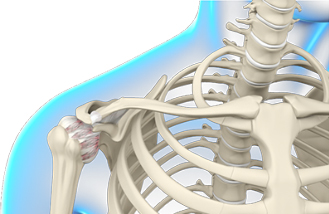 | Billing Questions: (833) 258-4717
| Billing Questions: (833) 258-4717
Online Bill Pay & Patient Portal | Request Medical Records / FMLA & Disability Forms
Our Blog
7 Joint Conditions Commonly Associated with Diabetes

According to research studies more than 100 million US Americans are living with diabetes or pre-diabetes. Uncontrolled diabetes can lead to serious complications such as blindness, kidney failure, or gangrene requiring amputation if not treated during the early stages of the disease.
Here are 7 joint conditions commonly associated with diabetes:
- Dupuytren's contracture: This is a deformity in which one or more fingers are bent towards the thumb. It is caused due to scarring of the connective tissue present in the palm of the hands and fingers. It may be caused a result of diabetic induced metabolic changes in the body. Treatment options include steroid injections to reduce inflammation and surgery to break apart the connective tissue.
- Charcot Joint: This is a joint condition that primarily affects the feet. There is deterioration of the joint due to nerve damage caused by diabetes. Symptoms will include numbness, tingling, and loss of sensation which will progressively result in redness, swelling, deformity, and instability of the joint. If diagnosed early, joint deterioration may be slowed down or halted with use of orthotics and limited weightbearing.
- Diabetic Hand Syndrome: This is a disorder in which the skin of the hands becomes thick and waxy in appearance. There is gradual loss of flexibility as the condition progresses with the patient being unable to fully extend the fingers or press the palms flat together. Although the loss of mobility is not reversible, worsening of the condition may be halted or slowed down with physical therapy.
- Osteoporosis: This condition is characterized by the weakening of bones, making them susceptible to fractures and deformity. Patients diagnosed with insulin-dependent diabetes are at a higher risk of developing osteoporosis. Symptoms may be managed by eating a healthy diet with adequate amounts of vitamin D and calcium as well as taking medications to improve or maintain bone mass.
- Osteoarthritis: This condition involves the breakdown of cartilaginous surfaces of a joint. The condition may be caused due to excessive stress on the joint as a result of obesity, which is often a comorbid condition in non-insulin dependent diabetic patients. The treatment would involve reducing excess weight or joint replacement for advanced osteoarthritis.
- Frozen shoulder: The condition is characterized by pain and loss of mobility in the shoulder. Patients with diabetes have a higher risk of developing this condition. Frozen shoulder may be treated with aggressive physical therapy to preserve range of motion.
- Forestier disease: This disease may cause hardening of ligaments and tendons as well as abnormal bone growth leading to stiffness in the affected part of the body. Stiffness in the neck or back is a common symptom of Forestier disease. The treatment will depend on severity of symptoms ranging from pain medication to surgical removal of abnormal bone.
If you have been diagnosed with diabetes, prompt treatment of any musculoskeletal condition is an important part of your care. Visit the orthopedic specialists of The Carrell Clinic for an evaluation and treatment recommendation.
The physicians at Carrell Clinic are committed to providing the highest level of orthopedic care in Frisco & Dallas, Texas. Click here to schedule an appointment.
